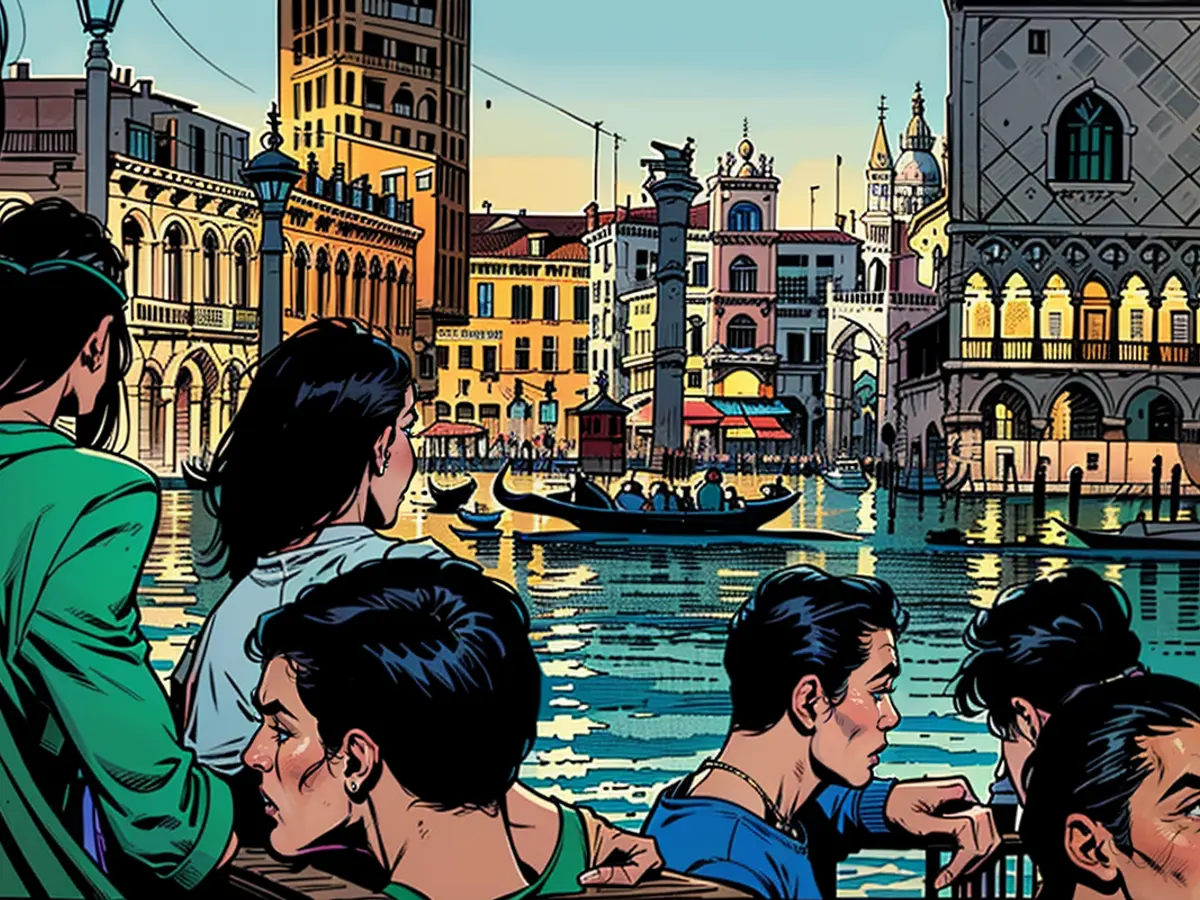Venedig will dishearten tourists even more
Five Euro Entrance Fee Has Been Paid by Day-Trippers for a While to Visit Venice. The Conclusion: A Lot of Money Collected, Fewer Tourists Deterred. Popular City Plans to Raise the Fee and Turn Up the Heat.
After the completion of the world's first trial with an entrance fee for day-trippers, Venice intends to charge an entrance fee - not five Euros anymore, but up to double that amount. This test will come to an end this weekend after a total of 29 days. From the next year onwards, ten Euros will have to be paid to visit the city when it is particularly crowded at the Italian Adriatic Sea.
Michele Zuin, the city councilor responsible for finances, announced in the local newspaper "Il Gazzettino" that a "base fare" will apply from 2025 on specific days. The exact amount has not been revealed yet. At "critical days," a maximum fare of ten Euros will have to be paid. "We hope this will discourage tourists," said the city politician.
The city will wait for an official balance after the last two test days on Saturday and Sunday before making a decision. The data collected during this period will first be evaluated. The approach, despite criticism from the population, has already been decided: The test will result in a regulation - not on all days of the year, but during periods of high traffic.
Venice collected more than two million Euros with the new fee. On some days, over 25,000 paying visitors were registered. Reliable estimates on how many tourists managed to avoid the five Euro fee are not available. However, it is clear: The real goal - to limit mass tourism, which Venice suffers from more than most cities - was not achieved.
City Treasurer Zuin admitted that "there were no significant deterrent effects." However, no one had expected otherwise. "Things will be different when the ten-Euro maximum is enforced on days when the city reaches a critical attendance threshold," said Tourism City Councilor Simone Venutini.
"They Don't Want to Stop Tourism"
The spokesperson for the Citizens' Initiative Assemblea per la casa Venezia (Assembly for the House of Venice), Federica Toninello, told Rai TV about the previous experiences: "It brought money into the city's coffers, but it didn't work."
And American author Donna Leon, whose Venedig crime novels have become worldwide successes, shared: "The authorities don't even want it to work: They don't want to stop tourism. They want to make money from tourists." Leon has long since given up her residence in Venice.
The regulation applied for a total of 29 days. In principle, an entrance fee of five Euros was waived between 8:30 AM and 4 PM. A QR code could be obtained online and downloaded onto a smartphone. Otherwise, a fine of up to 300 Euros threatened - in reality, no one had to pay that much.
With approximately 15 million visitors per year, Venice is one of the most visited cities in the world. Mass tourism brings a lot of money into the coffers, but it also causes significant damage. Today, fewer than 50,000 permanent residents live in the city center with its hundreds of canals. Instead, there are over 50,000 guest beds. On many days, it is barely possible to get through the narrow alleys around St. Mark's Square and Rialto Bridge.
Last year, the city was on the verge of being added to the Red List of Endangered World Heritage Sites by the United Nations. This could be prevented with a fee. There were several exceptions, however: locals, hotel guests, and children under 14 years old, for example, did not have to pay. This is to remain the case.
The international community has shown interest in Venice's experimental tourist fee, as it attempts to manage mass tourism without fully deterring visitors. The city of Venice plans to increase the entrance fee to International tourists, aiming to limit excessive tourism during peak seasons.






